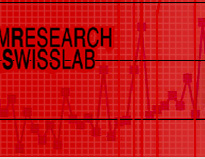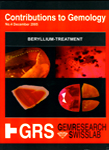Gemological
Testing
During routine gemological
testing, samples were checked for fluorescence and
subjected to a color-stability test procedure. The
samples included sapphires of different colors, origin
and treatment (N, E, T, H(Be) and synthetic samples)(See
Table A1). Of particular interest are the samples
for which the trace element concentration, Beryllium
in particular, has been analyzed (See Table A6).The
samples were first graded for color and saturation
according to the GRS Master, and then half-covered
with Aluminium Foil. They were than exposed to UV
light (Eickhorst lamp, Type Mulitspec UV-AC) for two
days at a distance of 1cm. Two wavelength were used:
366 and 254nm. After both the covered and uncovered
parts were subjected to UV radiation, the samples
were subjected to a 100 Watt halogen lamp for two
days and, in a repeating experiment, warmed for 30
seconds in a gas flame.
|
|
Results
UV Fluorescence
Exposed to UV light, the H(Be)-samples showed
a particular reaction (Fig. A6) The H(Be)-samples
from Madagascar exhibited intense yellowish-orange
fluorescence in long wavelength UV (Fig. A6a.) and
medium yellowish-orange fluorescence in short wavelength
UV. This reaction was not found in the other tested
groups (N, E, T and synthetic). This particular reaction
to UV light was observed in all samples of the H(Be)-groups,
and absent in the reference samples (E,N). Another
group of samples thoroughly examined for Beryllium
(Sample 1999, Table A6), revealed a very particular
reaction to UV light - an intense outer rim with whitish-blue
(milky) fluorescence was present. This phenomenon
was not observed in the unheated half piece from the
same sample.
|








